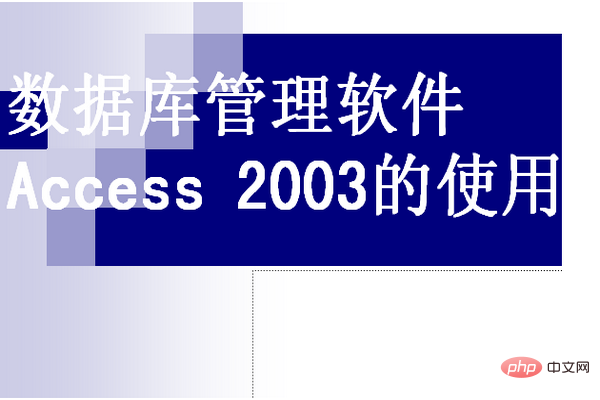
Tables in the access2003 database organize data in rows and columns. Each row is called a record and each column is called a field.
We call each row in the table a "record". Each record contains all the information in this row, just like all the information about a person in the address book database, but the record is not in the database. A special record name, often using the row number where it is located to indicate which record it is.
Fields are smaller units than records. A collection of fields forms a record. Each field describes a certain feature of the document, that is, a data item, and has a unique field identifier for computer recognition.

Related recommendations: "Access Database Tutorial"
Advantages of Access database:
1. Improve speed and reduce code amount
2. Use integers for mathematical operations
3. Avoid using procedure calls
4. Use with caution Long data type
5. Use variables to store attributes
6. Preload tables
Disadvantages:
1. Database overflow When the database is large, the performance will generally start to decline when the ACCESS database reaches about 100M! (For example: too many visitors may cause IIS to freeze, excessive consumption of server resources, etc.)
2. It is prone to various database problems caused by too fast database refresh frequency.
3. The ACCESS database is not as secure as other types of databases.
4. Once the ACCESS forum gets bigger, it is easy to have database problems. When the forum database is more than 50M, there are about 50,000 posts, and there are about 100 people online, your forum will basically be there. It takes time to process the database, and the database is likely to be slow at this time.
The above is the detailed content of Tables in a database organize data into rows and columns. What is each row called?. For more information, please follow other related articles on the PHP Chinese website!